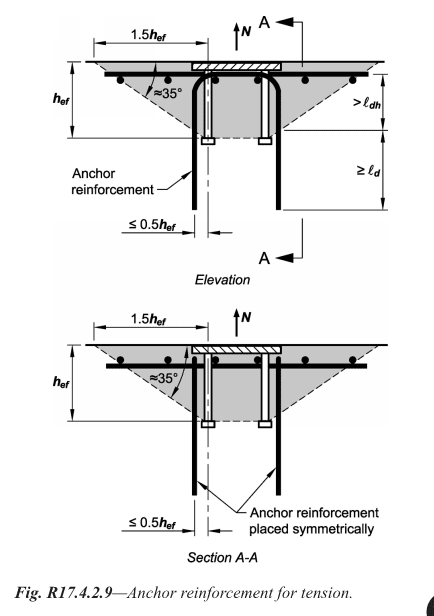azulazul
Structural
- Jul 16, 2021
- 12
Hi all,
Just a few questions below:
1. With the 2 U bars shown below on ACI, would that count as 4x Astxfy or 2x Ast x fy for tension capacity of the tension reo?
2. Can I just provide sufficient tension reo on one side of the failure plane (not both sides symmetrically). Using the same example from ACI below, the 2 u bars will be on one side of the bolt group only, taking the tension.
3. Instead of U bars, can we use straight bars in the top matt (perpendicular to bolts) that are developed beyond the failure zone. The load I assume would be N*/Tan35 ?

Thanks,
Just a few questions below:
1. With the 2 U bars shown below on ACI, would that count as 4x Astxfy or 2x Ast x fy for tension capacity of the tension reo?
2. Can I just provide sufficient tension reo on one side of the failure plane (not both sides symmetrically). Using the same example from ACI below, the 2 u bars will be on one side of the bolt group only, taking the tension.
3. Instead of U bars, can we use straight bars in the top matt (perpendicular to bolts) that are developed beyond the failure zone. The load I assume would be N*/Tan35 ?

Thanks,
